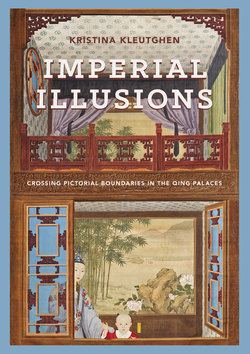Читать книгу Imperial Illusions - Kristina Kleutghen - Страница 14
На сайте Литреса книга снята с продажи.
ОглавлениеINTRODUCTION
A New Vision of Painting
INSIDE THE FORBIDDEN CITY ONE DAY, LATE IN HIS REIGN, THE QIANLONG emperor (r. 1736–95) might have left his office and throne room at the east end of the Hall of Mental Cultivation (Yangxindian) and walked west down its main corridor toward the Three Rarities Studio (Sanxitang).1 Under Qianlong’s patronage, the arts flourished at the Chinese imperial court: the Three Rarities Studio, merely a tiny room at the westernmost end of the hall, was reserved for his enjoyment and connoisseurship of the vast imperial painting and calligraphy collection. Before stepping over the raised threshold into the antechamber preceding the studio, he likely paused at the sight before him. Perfectly framed by the doorway was a room with a distinctive floor of blue-and-white porcelain tiles and decoratively latticed windows that receded to a moon gate, which opened onto a secluded private garden occupied by two men (figure I.1). The older man was presenting a branch of blossoming plum to the younger man, and both were casually dressed in scholars’ robes rather than court costume. The scene was one of tranquility, leisure, and personal connection, a sharp contrast to the formality and the political responsibility of the east end of the hall.
Although initially this view appeared real, once the emperor stepped through the doorway its true nature would have been revealed as a special type of eighteenth-century court painting (figure I.2). Scenic illusion paintings (tongjinghua) are massive wall- and ceiling-mounted paintings in full color on silk, produced collaboratively by the best Chinese
